Swan upping finds cygnet numbers down by a third
- Published
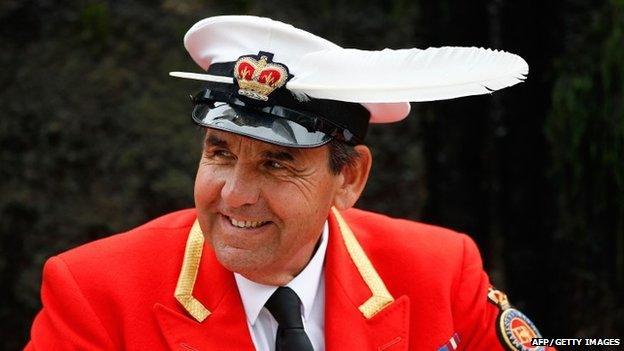
David Barber, the Queen's Swan Marker, said vandalism was an issue with people throwing stones at swan eggs
The man responsible for carrying out a census of swan numbers on the River Thames has said the population of young swans has declined by roughly a third.
The Queen's Swan Marker David Barber said 83 cygnets had been counted compared to 120 last year.
A five day-long ceremony known as swan upping finished at Abingdon Bridge in Oxfordshire on Friday.
The tradition dates back to the 12th Century and started in Sunbury, Surrey, on Monday.
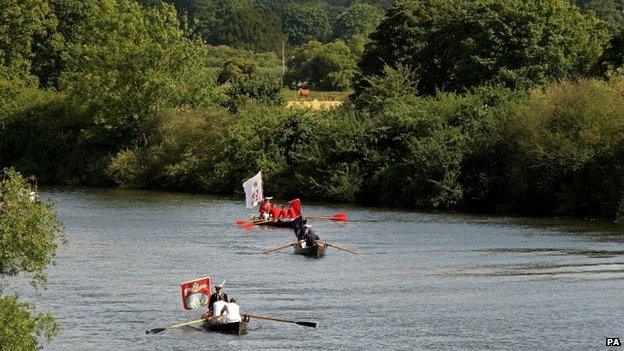
The census began in Sunbury, Surrey, on Monday and finished at Abindgon Bridge
The census counts the swan population on stretches of the Thames in London, Surrey, Buckinghamshire, Berkshire and Oxfordshire.
Mr Barber blamed the decline on air rifles being used in the Windsor and Staines area.
He said: "There are also a lot of mink too. You can't do much about natural predators but youths shooting at things isn't on."
According to Mr Barber, the Queen has the royal prerogative to own any unmarked swan in open water if she so wishes.
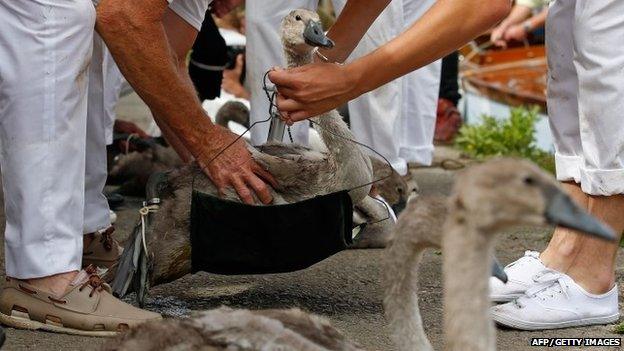
Swans are rounded-up, marked, weighed, health checked and released as part of the five day-long count
It is called swan upping as the team go up the river and the swans are turned upside down during the process.
They are weighed, counted and a health check is done.
Mr Barber said: "There is also a lot of vandalism. We get a lot of nests vandalised and youngsters throw stones at eggs in the nests."
The total number of swans this year has not yet been confirmed, he added.
Last year the census recorded 2,014 swans, including 120 cygnets and 34 breeding pairs.
- Published21 July 2015
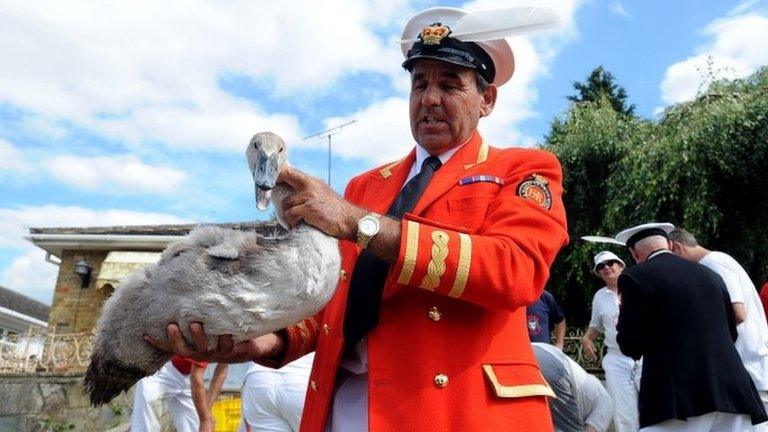
- Published20 July 2015
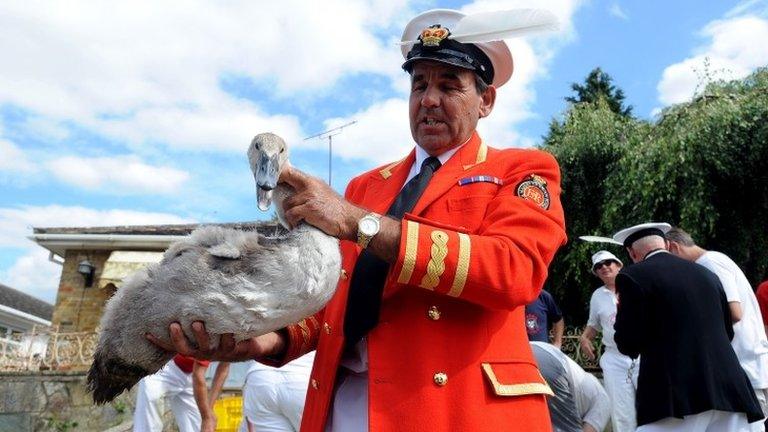
- Published11 June 2015
